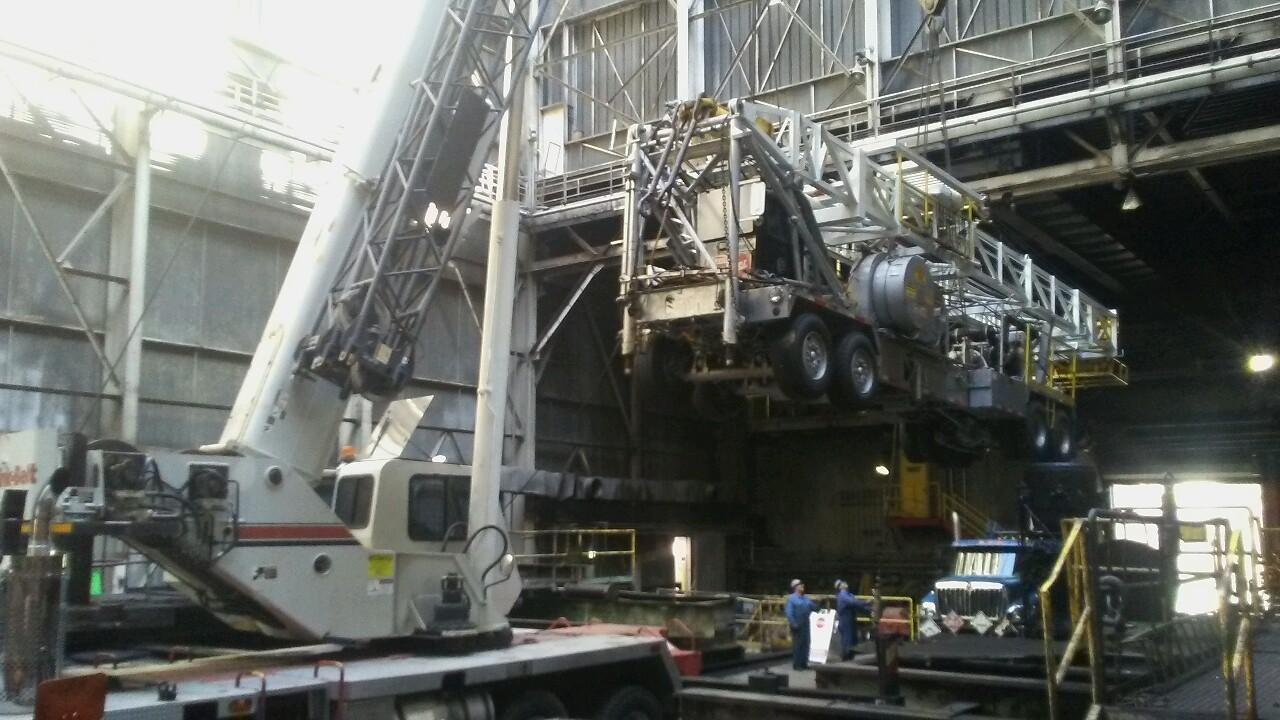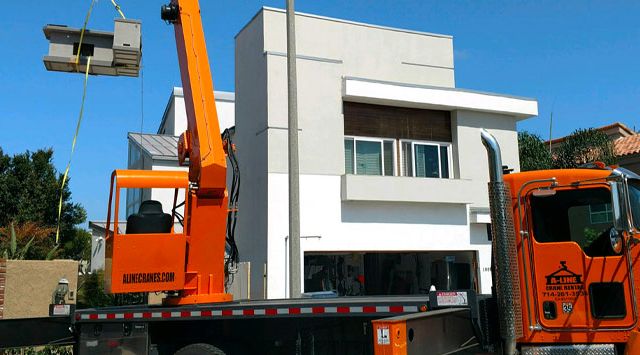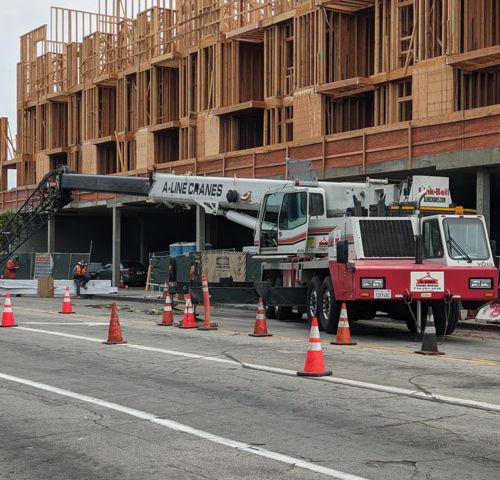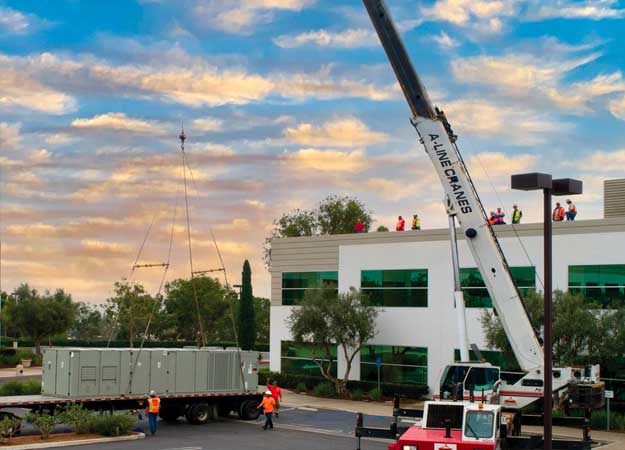Important Types of Crane and Rigging Equipment
Table of Contents

Are you gearing up for a major construction venture or a task that entails heavy lifting?
Incorporating a crane into your project can significantly ease the movement and management of bulky items. Over time, cranes have evolved to become crucial tools in any project requiring the transportation of heavy materials. Without these durable and adaptable machines, constructing architectural wonders such as skyscrapers, high-rise buildings, and bridges would be a formidable challenge.
The variety of cranes available today might seem overwhelming, making the choice of the right crane for your project a daunting decision. Additionally, selecting the appropriate rigging equipment to safely lift items is essential. Understanding the different rigging accessories available is key to choosing the right equipment for your rigging needs. Below, you’ll find detailed information on crane rigging and the various rigging tools necessary for a secure and efficient project.
What is Crane Rigging?
Although “rigging” and “lifting” are terms often used interchangeably in the context of heavy equipment operations, they have distinct meanings yet work together towards a common goal.
Crane rigging involves the process of securely fastening a load with various equipment pieces before lifting. This preparation is crucial for the safety and success of the lifting operation, which is the actual hoisting and maneuvering of the load across the worksite.
What is a Crane Riggers Role?
The role of a crane rigger is fundamental in the setup and preparation of construction sites, worksites, warehouses, or any venues where heavy hauling is a necessity. Their key responsibilities encompass a variety of tasks essential for the smooth operation of heavy lifting activities. They are tasked with creating comprehensive rigging plans and actively participating in the preparation of the worksite. Their duties extend to anchoring and aligning machinery to ensure stability and safety, as well as adding and securely attaching loads for transportation or construction. A crane rigger is also responsible for the precise coordination of heavy machinery movement, often utilizing hand signals for communication. They must adhere to safety and operational regulations set forth by the Occupational Safety and Health Association (OSHA) and the American Society of Mechanical Engineers (ASME). Additionally, a significant part of their role involves calculating the weight of loads to ensure that lifting operations are carried out safely and efficiently.
Calculating the Weight for Rigging
Determining the correct weight of the load is a crucial step before commencing with the rigging process, ensuring the lift is conducted safely. There are instances where the weight calculation is straightforward or even unnecessary. For example, the load’s weight can often be directly obtained from an industrial scale, design plans, engineering blueprints, or even marked directly on the load by the manufacturer. Catalog data may also list the weight specifications.
However, when the weight is not readily available, you can resort to basic calculations:
- Calculating Volume: The method to calculate an object’s volume depends on its shape. For cube or rectangular loads, multiply the length by width by height. For a hollow cylinder, the calculation involves multiplying the area of the circular base by the height. With more complex shapes, conceptualize the load as a solid rectangle and calculate its volume accordingly.
- Identifying Material Type: Given that different materials have distinct densities, it’s important to know the material of your load. Reference industrial charts that list weight per cubic foot for various materials to find the specific density. For instance, aluminum has a density of 165 pounds per cubic foot, whereas cast iron is 450 pounds per cubic foot.
- Determining Load’s Weight: Multiply the calculated volume by the material’s density (pounds per cubic foot) to find the load’s weight. Alternatively, riggers can use dynamometers or load cells attached to the rigging gear for a direct weight measurement. These devices measure the tension exerted by the load, converting it into a weight reading through a hydraulic pressure system or a strain gauge.
Best Rigging Safety Practices for crane Worksites
Rigging Hardware Safety is paramount when transporting heavy loads to prevent accidents. To ensure the highest level of safety while using rigging hardware, adhere to the following practices:
- Ensure that all rigging equipment is in good condition, free from cracks, bends, stretches, or missing components, as these flaws can compromise safety and increase risk when handling heavy loads. Any defective equipment must be promptly repaired or replaced prior to use.
- Rigging hardware should be utilized strictly according to the manufacturer’s guidelines. Each piece of hardware is designed with specific capabilities, including maximum weight limits, recommended usage angles, and proper attachment methods to lifting devices. Always consult the manufacturer’s instructions and crane rigging charts to guarantee correct usage.
- Regular inspections of the equipment by a professional are essential before each use. Additionally, servicing of the hardware must be conducted as necessary to ensure optimal performance and longevity of the equipment.
- Working directly under suspended loads or leaving loads hanging unattended on the rig should be strictly avoided to prevent accidents. It is crucial to ensure that all loads are securely and evenly balanced on the rigging equipment. Proper load securing prevents the risk of the load tipping, rotating, or falling, maintaining safety on the worksite.
Rigging Gear Inspection
Ensuring the safety and reliability of rigging gear starts with rigorous inspection routines. From the moment new equipment is received, it should undergo a visual inspection to identify any defects and verify capacity markings or tags. This is crucial for matching project requirements. Expert riggers recommend daily or pre-use inspections to detect any new issues. Additionally, adhering to ASME and OSHA guidelines, rigging equipment requires periodic evaluations, typically after a year of service. The frequency of these inspections should be adjusted based on the severity of service conditions, how often the equipment is used, and the specifics of the load handling activities, drawing on experiences from similar tasks in the past.
Selecting Rigging Gear by Working Load Limit (WLL)
Choosing the right rigging gear involves considering the Working Load Limit (WLL), which is the maximum safe weight the equipment can handle. It’s essential to ensure that all components of a rigging setup are compatible in strength to maintain the system’s overall integrity. The system’s safety is reliant on its weakest component, emphasizing the importance of matching WLL across all rigging equipment used.
Choosing the Right Sling and Hitch
Identifying the most appropriate sling type and hitch configuration is pivotal for safe and efficient rigging operations. Options include:
- Basket Hitch: Cradles the load, preventing additional tension, with the choice of single or double wrap configurations depending on the load’s characteristics.
- Double Wrap Choker Hitch: Provides complete contact around the load, enhancing grip and preventing slippage.
- Vertical Hitch: Best for utilizing a sling’s full capacity, suitable unless dealing with long, unbalanced, or loose materials to avoid rotation or twisting.
- Choker Hitch: Ideal for cylindrical objects, it wraps the sling around the load for a secure lift. Wooden blocks can improve the grip and angle of the choke.
Understanding Sling Angles
The angle at which a sling is used significantly impacts the load’s stress limits. For instance, a 90° angle (vertical lift) distributes the weight evenly, but reducing the angle increases stress on each sling, diminishing its capacity. Assessing sling capacity at various angles is crucial for safe lifting operations, necessitating the use of a rigging chart.
Understanding Rigging Equipment Hardware
Rigging equipment is designed to lift and maneuver loads safely within crane systems, including tools for evenly distributing the load’s weight during hoisting. This equipment is indispensable across various applications, ensuring safe load handling in construction, transportation, shipping, and more. It’s imperative to select the correct rigging tools for each project, underscoring the need for professional expertise in all crane operations.
Key considerations for selecting rigging equipment include the site’s environmental and weather conditions, the quality of rigging materials, and the weight of the materials being lifted. Knowing the specific working load limit of each piece of hardware is essential to ensure it can safely manage the intended load. Familiarity with different types of rigging equipment and their applications plays a vital role in the successful and safe execution of lifting tasks.
Rigging Hardware Safety
Safety in rigging operations is paramount to prevent accidents. Essential safety tips for using rigging hardware effectively include inspecting all equipment for condition, adhering strictly to manufacturer specifications, conducting regular professional inspections, avoiding working under suspended loads, and ensuring loads are well secured and balanced on the rigging equipment. Following these practices helps maintain safety and efficiency on the worksite, preventing the risk of accidents during heavy load handling.
A-Line Crane is committed to adhering to these safety practices, employing NCCCO certified operators who are experts in the field. Our focus on selecting the right gear, conducting thorough inspections, and ensuring the correct use of slings and angles guarantees the highest safety standards in every project. Trust A-Line Crane for all your rigging needs, where safety and operational efficiency are our highest priorities.
Conclusion: Ensuring A Safe And Successful Project
A-Line Crane adheres to these rigging safety practices, employing NCCCO certified operators who are well-versed in the latest standards and techniques. From selecting the appropriate gear and conducting thorough inspections to choosing the right sling type and understanding the nuances of sling angles, our team is committed to maintaining the highest safety standards on every project. Trust A-Line Crane for all your heavy lifting needs, where safety and efficiency are our top priorities.
Transforming Renovation and Retrofitting with Crane Technology Table of Contents The renovation and retrofitting industry plays a crucial role in…
The Role of Cranes in Streamlining Modular Construction Table of Contents Modular construction, a method where buildings are prefabricated in…
How Cranes Elevate the Roofing Industry Table of Contents In the roofing industry, efficiency, safety, and precision are key to…
Steel Erection Crane Company Table of Contents The Mobile Crane and Steel erecting In the construction industry, structural steel stands…
Building Material Crane Services Table of Contents In the fast-paced world of construction, the ability to move and manage building…
Safety Tips for Installation of HVAC Units Hydraulic Cranes or Boom Trucks Table of Contents https://www.youtube.com/watch?v=mJbQnarATPo Safety Tips for Crane…
Important Types of Crane and Rigging Equipment Table of Contents Are you gearing up for a major construction venture or…
What Is a Boom Truck? Table of Contents Exploring the Multifaceted Boom Truck: A Construction Workhorse In the dynamic world…









